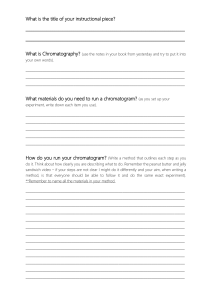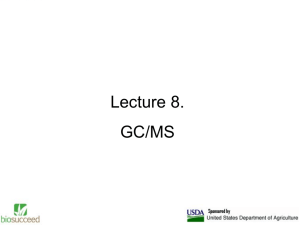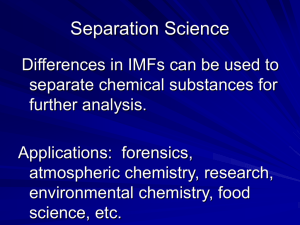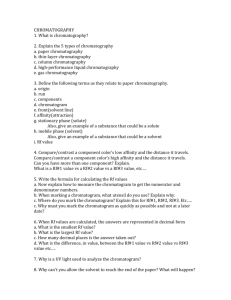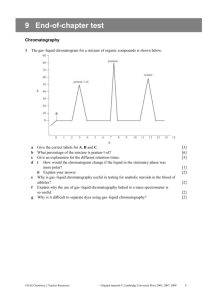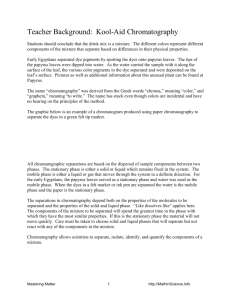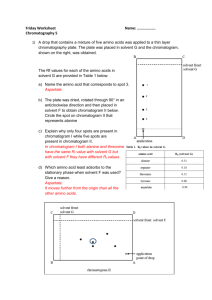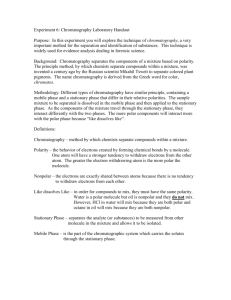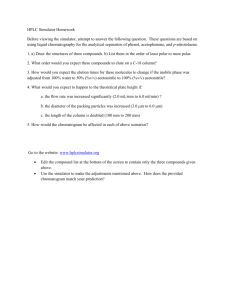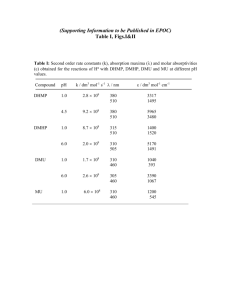Separating a Mixture of Biphenyl, Benzhydrol, and Benzophenone
advertisement
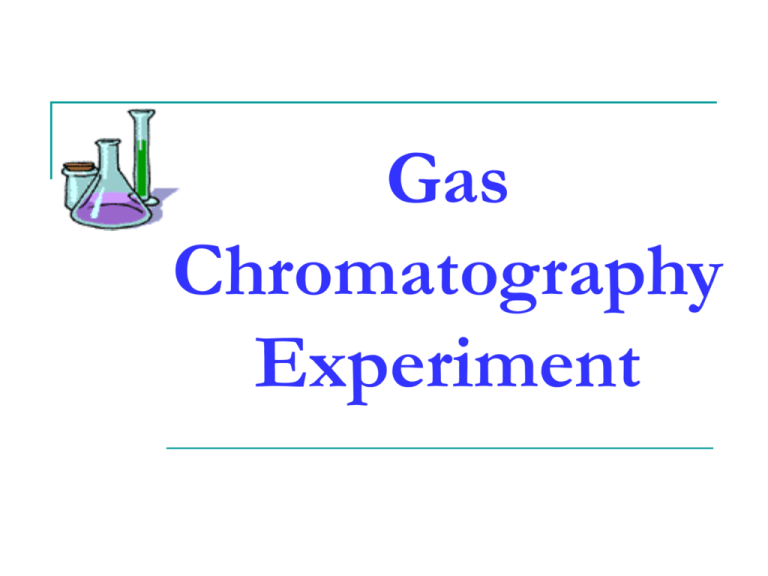
Gas Chromatography Experiment Gas Chromatography - Gas Chromatography (GC) is a common technique used to separate and identify volatile organic compounds (analytes). As the gas moves the analyte across the stationary phase, the analyte will be in equilibrium with the gas and the liquid phase (usually suspended on a solid surface). - This method depends upon the solubility and the boiling point of the volatile organic liquid in order to separate them from a mixture. - It’s both a qualitative (identity) and quantitative (how much) tool. - The mobile phase is an inert gas. Commonly used gases include N2, He, Ar, and CO2, depended on the type of detector. - The stationary phase is a high-boiling liquid film supported on an inert solid and packed in either a fused silica (12 to 30 meter) capillary column or in a copper or stainless steel (1.5 to 3.0 meter) metal column. GC Instrument Schematic diagram for gas chromatograph Injection Port Sample sizes for standard GC procedures typically involve 0.1 to 10.0 microliters of analyte solution injected into a heated sample port. The needle must be inserted carefully to avoid bending or breaking. Stationary Phase The stationary phase can either be polar (polyethylene glycol - PEG) or non-polar (polydimethylsiloxane - PDMS). For capillary columns, the diameter is typically less than 1 mm, so samples sizes are small. For product separations (not just composition analysis), larger columns can be used in order to isolate milligrams of product. GC Chromatogram The chromatogram shows: 1. the order of elution (order of components coming off the column) related to boiling points and polarities of the substances in the mixture, 2. the retention time (time of elution), and 3. the relative amount of the components in the mixture. Experimental Procedure 1. Instead of the acetates listed in the lab manual, we will work with a series of alkanes. The gas chromatogram for these alkanes has already been done. 2. The TA provides only 1-2 drops of the GC unknown. Record the code in your lab notebook. 3. Perform just one run of the unknown. 4. Compare your unknown chromatogram to the posted chromatogram of the mixture containing all “knowns”.

